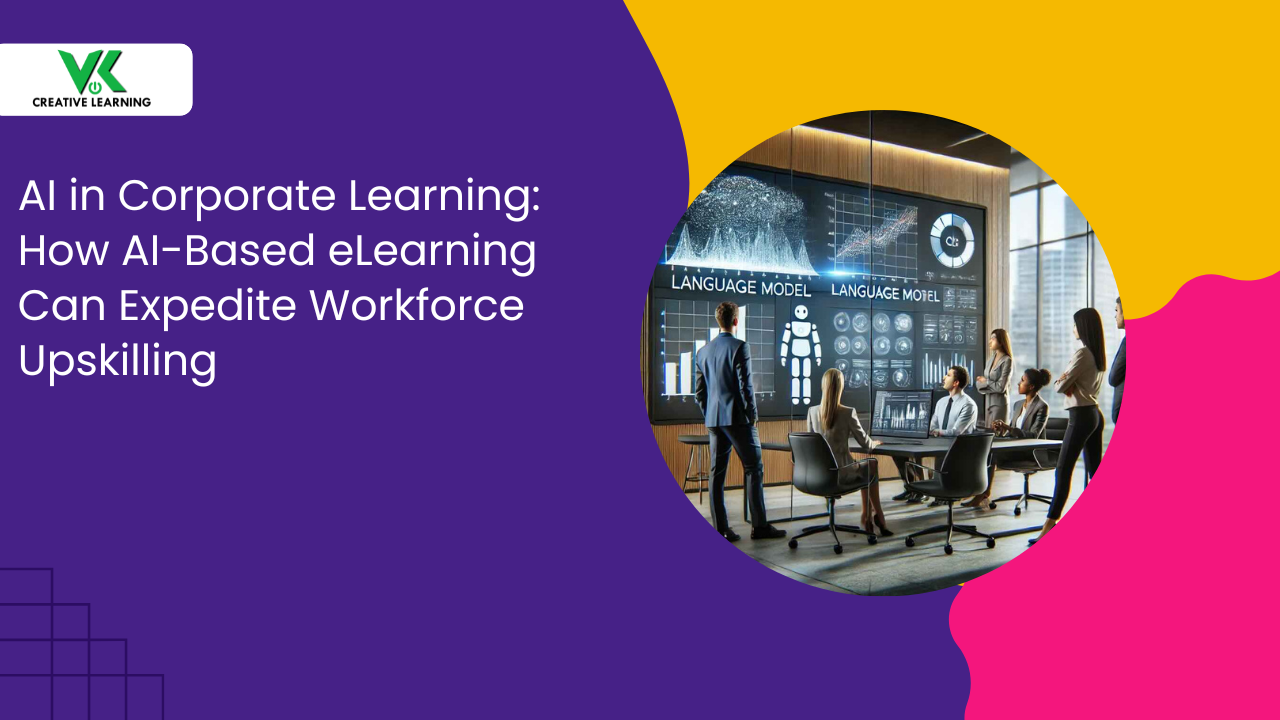5 Forms Of Effective Microlearning Elearning Courses
April 24, 2022
Microlearning eLearning solution' engages and inspires learners to get a deeper understanding of a topic. Microlearning is all about dividing a complex topic into small learning modules, with essential information, to make comprehension easy. Having said that Microlearning is more than a segmented version of a bigger eLearning course, as it makes use of various elements such as videos, simulations, infographics, attractive informative visuals, and many more elements.
This kind of training was developed in response to the requirement for professionals to get rapid, accessible training at the point of need. Given that the average employee has just 24 minutes per week (or 1% of their workweek) to devote to training, it is critical to provide short, meaningful learning opportunities.
To whom are 'Microlearning eLearning solution' resources often the best-suited?
'Microlearning eLearning solution' resources are often the best-suited mode for training employees, new technicians, new joiners, or experienced professionals who want to enhance their knowledge. Microlearning eLearning courseware work because of the following reasons:
- Microlearning eLearning courseware, typically, lasts a few minutes such as 5 to 10 minutes.
- Employees have the ability to access data when and how they like it.
- The eLearning Microlearning modules are associated with a single learning purpose or topic.
Is Microlearning methodology known by other names too?
Microlearning eLearning training has been referred to by a variety of names in the past, and it combines elements of many distinct instructional styles.
They are referred to as "bites" or "nuggets" of information by the market. "Just in time learning" addresses the requirement for issue-specific training.
"Spaced learning" distributes education throughout time intervals, ensuring that workers remember more knowledge.
Additionally, mLearning refers to training conducted through mobile devices, where microlearning is frequently used.
How does 'Microlearning eLearning solution' work?
Microlearning is not only a shorter course that is sometimes provided through mobile devices. It's a radical shift from the concept of time-consuming courses. Rather than that, consider microlearning eLearning resources that your employees may use when and when they are most needed.
Because microlearning is not just shorter courses, it is designed around an employee's real learning cycles. Instead of forgetting the majority of the knowledge covered over a lengthier training session, professionals may continue to access those resources as needed.
'Microlearning eLearning solution' has the following essential attributes:
- It supports many devices and a variety of rich media formats.
- Learners are action-oriented as they acquire, practice, and apply newly acquired ideas on the job.
What cannot be categorized as Microlearning?
Microlearning is more than dividing a lengthy eLearning course into easily learning smaller modules. It is linked to a particular learning objective and should elicit an action from the learner.
In what ways can Microlearning methodology be used in training?
Microlearning is brief, targeted, accessible through mobile devices, and adaptable to both formal and informal instruction and here are a few possibilities:
Formal eLearning training
You may convert your typical eLearning or macrolearning course into a collection of microlearning nuggets that are smoothly linked through a learning path.
When smaller eLearning modules are incorporated within mobile devices, they are called as mobile learning or mLearning. The mobile learning modules allow learners to absorb information through the device of their choice and in their own leisure time.
Supplement formal training.
Microlearning may also be used to complement current 'eLearning training sessions.'
It may be delivered in the form of chunks to supplement primary, formal instruction. Alternatively, you might provide a sequence of nuggets to test the trainees.
Additionally, you may create them as a collection of nuggets for practice and ultimate mastery.
Besides, you may use it to enhance instructor-led training such as online pre/post-workshop content or practice sessions
A glance at the use of microlearning in different ways
Microlearning methodology is used in e-learning solutions in different ways, as explained below, based on the requirements of the companies.
1. Infographics - both static and interactive
Infographics are a kind of Microlearning approach that works well for summarizing the essential lessons from an 'eLearning courseware.' The visual method of summarizing essential points results in increased memory and retention. Interactivity, like infographics (in terms of visual style), allows you to stack information and cram more details. Additionally, they may be utilized as brief learning manuals.
2. Portable Document Format (PDF) and interactive PDFs.
This is arguably the most often used format for microlearning and may be used to offer fast, on-demand access to particular knowledge. Interactive PDFs are more modern form of the conventional PDF, which allows for the packaging of large amounts of material into relevant information groupings that the learner may quickly navigate through.
3. Videos
eLearning animated and whiteboard videos may be used alone or as part of a microlearning course.
- 'eLearning Animated and whiteboard microlearning clips’ are an interesting approach to demonstrate an abstract concept with examples.
- Provide visual learners with step-by-step instructions.
- For those who like watching videos to learn concepts, animated text with music also gives a unique perspective.
4. Simulation
Simulation is an effective microlearning method for acclimating professionals for executing a job before they begin their work.
A simulation on using aircraft is one of the most known instances of simulation. Before they set foot in the cockpit, the majority of pilots spend lots of time in a flight simulator. This enables them to handle catastrophic circumstances without jeopardizing passengers' safety.
While your organization may not be involved in pilot training, consider a real-life application such as earthquake-resistant building design. The danger is little, but the potential profit is enormous. Additional examples include emergency scenarios, standard procedures for healthcare professionals, stock market fluctuations, customer service concerns, and educating employees on safety exercises.
-
5. Performance Support Tools (PSTs).
Microlearning determines the optimal match to provide learners with performance help. PSTs are just-in-time learning aids that are integrated into the learner's workflow and are specifically created to meet specific requirements. They may provide a fast repair, a ready reckoner to assist them with their assignment, or a checklist that allows them to produce the appropriate quality output. Microlearning may be a very successful method for meeting these precise just-in-time learning requirements.
Create resources for microlearning for your employees
With so many various forms of microlearning available, it's never been simpler to create a personalized training program for your workforce. By using microlearning, businesses can ensure that they are providing their workers with effective, efficient, and inexpensive learning options.
If you're interested in learning more about how microlearning might benefit your employees and organization, the time has come to speak with the experts.
At VK Creative Learning (VKCL), we provide eLearning solutions to businesses worldwide, using various types of Microlearning techniques so that employees can be trained easily.




